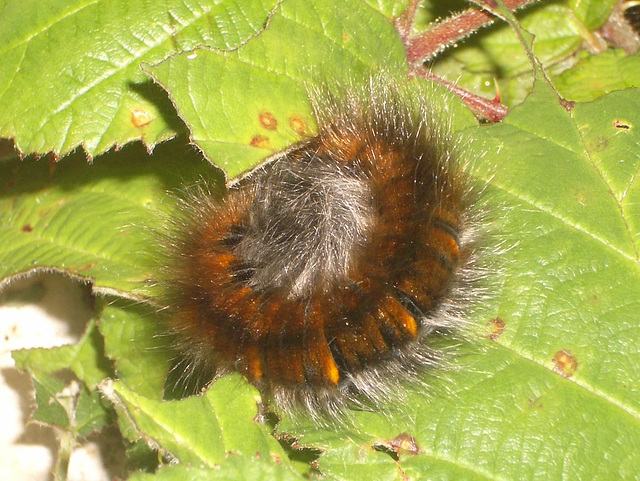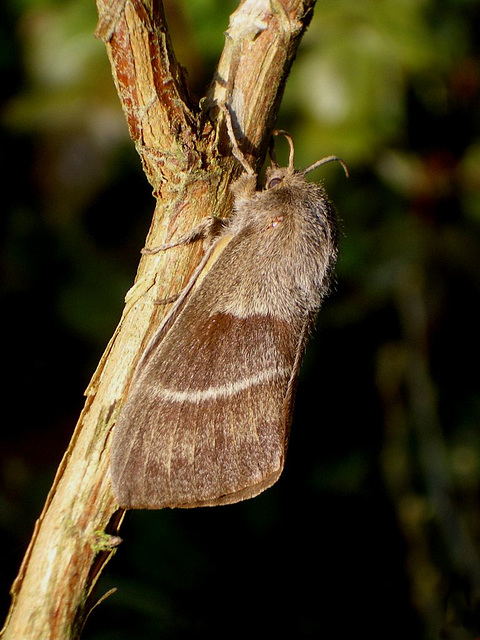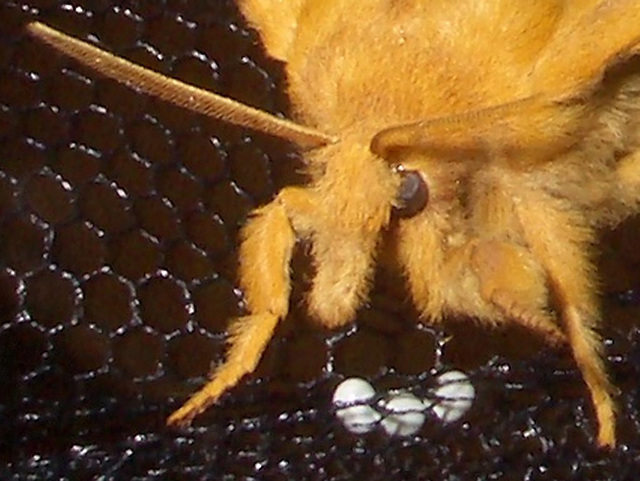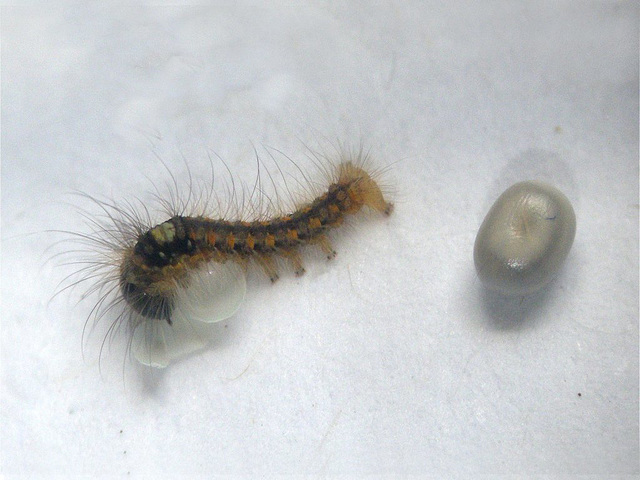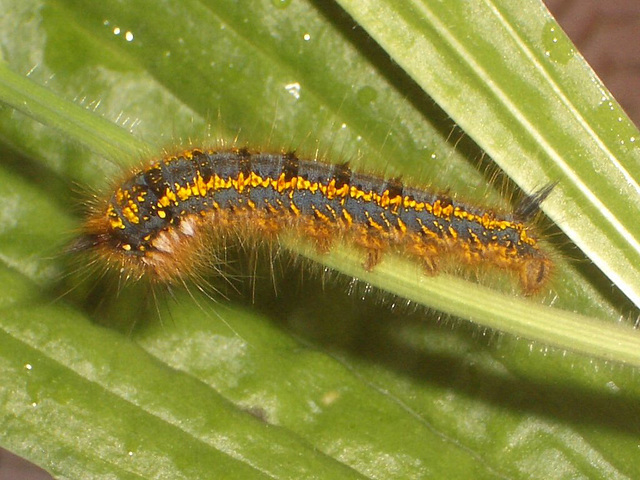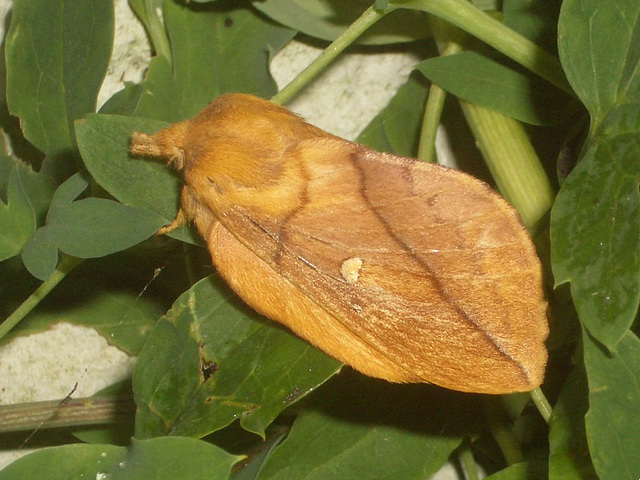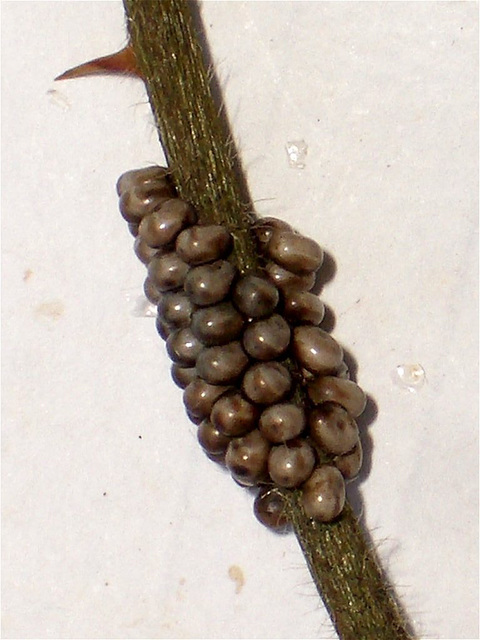![0014 Hepialus humuli (Ghost Moth [Swift]) 0014 Hepialus humuli (Ghost Moth [Swift])](http://cdn.ipernity.com/141/54/61/31565461.df99fa92.75x.jpg?r2)
Cornwall Moths: Small Macro Families 1
Folder: Moths in Cornwall UK
Macro Moths in the smaller families that we've recorded here in Cornwall, covering:
Hepialidae (Swifts),
Zygaenidae (Burnets),
Lasiocampidae (Eggars),
Saturniidae (Emperors),
Drepanidae (Hook-tips),
Thyatiridae (Blossoms & Lutestrings).
Number References at the beginning of the titles are from the UK Bradley 2000 List of Lepidoptera.
31 Mar 2014
1637 Lasiocampa quercus (Oak Eggar) Male
Lasiocampidae Wingspan: 60mm.
The day flying male dashes about over moorland looking for the newly emerged females, homing in on their pheromones. One morning, I was working though the catch from our garden moth trap, and got a surprise when a large brown moth flew over my shoulder. It had come inside the workshop through an open window, through an open door between rooms and up to the trap. Looking inside there was a female which had come in to light, so I put them both into a mating net where they coupled immediately. within a few minutes 4 more arrived through the same route, and between them there was much jostling to get to the female.
28 Oct 2013
1638 Macrothylacia rubi (Fox Moth)
Lasiocampidae Final length: ~75mm.
These big furry caterpillars can often be seen on Moorland on warmer sunny days through the Winter, basking in the sun, or looking for a quick snack on any Bramble leaves that they can find. Technically, they hibernate over Winter in the UK, but in mild Cornwall I've found that they are almost as active as in the Autumn or Spring, although they rarely eat very much during the colder period.
28 Oct 2013
1638 Macrothylacia rubi (Fox Moth)
Lasiocampidae Wingspan: 50-60mm.
A newly-emerged Female resting. THese fly at night, and when coming in to moth trap lights can seem enormous, but after they have settled, they seem to revert to a smaller size. This species readily lays eggs when put into a Keep Net during moth recording, so there are loads of eggs available on a night when they are flying. The males, like others in this group, dash over the Moors through the day searching for the newly emerged females.
17 Oct 2013
"Mirror Mirror on the Wall".....
Lasiocampidae:
1640 Euthrix potatoria (Drinker Moth) Female
This little lady looks strange, but to her species she may be very attractive.
See Album: Small Families 2
18 Aug 2013
1640 Euthrix potatoria (Drinker Moth) Hatchling
Here is a newly-hatched young caterpillar eating its egg-shell as its first meal. In many species, this first meal is critical, and the young caterpillar will die if it doesn't finish it before looking for its first leaf meal. It is always amazing how a caterpillar that size can fit inside a 3mm long egg (a neighbour unhatched one is in this picture),
17 Oct 2013
1640 Euthrix potatoria (Drinker Moth)
One of the caterpillars which hatched from the eggs laid by the pictured females, now half grown, and slowly becoming dormant for the Winter. They will finally awake in the warmer days in early Spring, finish feeding up andpupate to produce the next generation.
18 Sep 2013
1640 Euthrix potatoria (Drinker Moth)
A common species which is often cited as the moth which some women are afraid of. Both sexes are big, very active when flying, and easily attracted to lights, so an open window inevitably brings one of this species in at night, where it then dashes around the room bouncing off everything - even humans! The males are a darker brown and slightly smaller than the females, but at rest, they can look very like a dried leaf until disturbed.
28 Oct 2013
1643 Saturnia pavonia (Emperor Moth) Eggs
A small batch of eggs laid by a female in my culture, all carefully laid around the Bramble stalk.
30 Jun 2010
1 favorite
1643 Saturnia pavonia (Emperor Moth)
The caterpillars of the UK's only Silk-moth are quite handsome animals, with their black circlets over their dark green bodies. There are a variety of colours to the hair tubercles, ranging from lilac-pink, to cream, or white. The black and dark green can sometimes merge patchily breaking up the usual pattern which is seen here.
Jump to top
RSS feed- Latest items - Subscribe to the latest items added to this album
- ipernity © 2007-2024
- Help & Contact
|
Club news
|
About ipernity
|
History |
ipernity Club & Prices |
Guide of good conduct
Donate | Group guidelines | Privacy policy | Terms of use | Statutes | In memoria -
Facebook
Twitter



